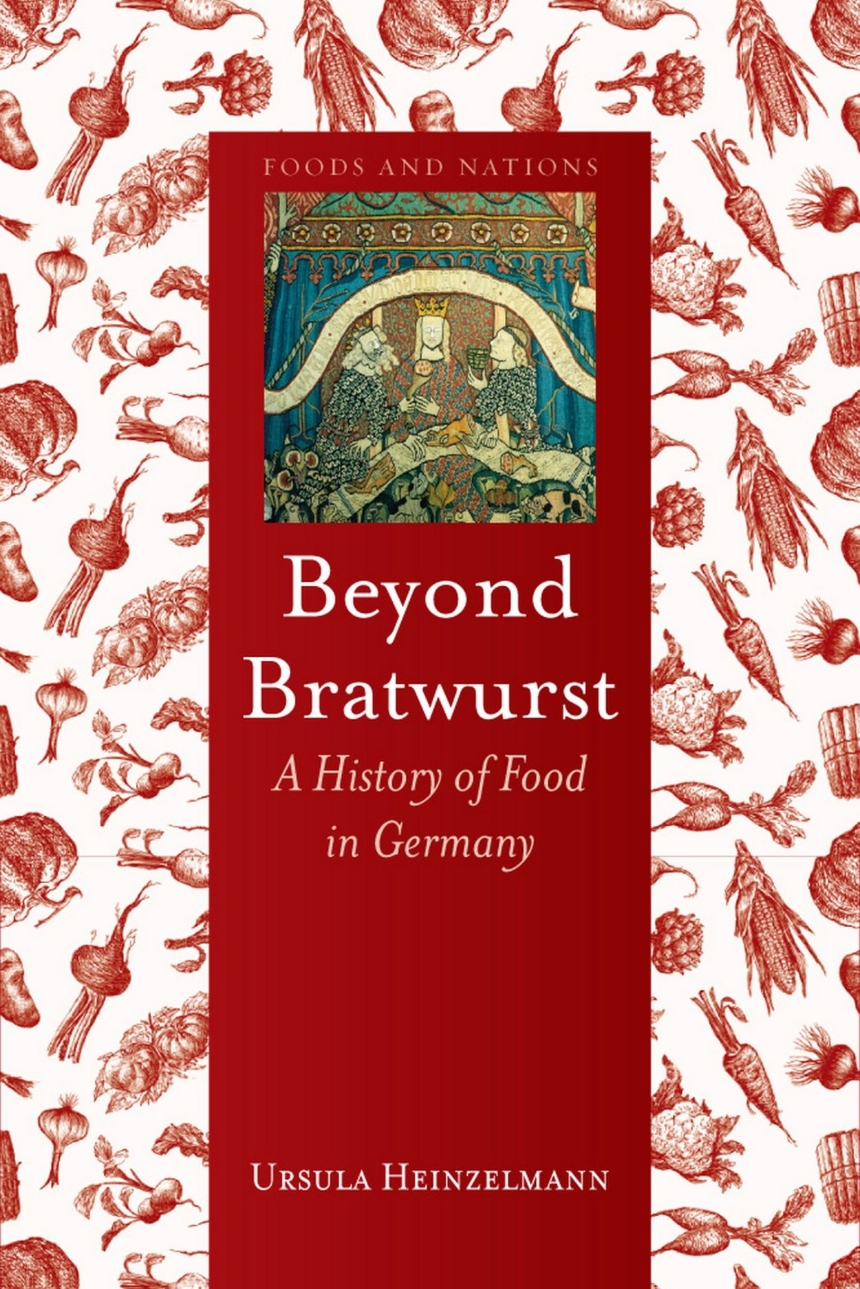Surveying the many traditions that make up German food today, Heinzelmann shows that regional variations of the country’s food have not only been marked by geographic and climatic differences between north and south, but also by Germany’s political, cultural, and socioeconomic history. She explores the nineteenth century’s back-to-the-land movement, which called for people to grow food on their own land for themselves and others, as well as the development of modern mass-market products, rationing and shortages under the Nazis, postwar hunger, and divisions between the East and West. Throughout, she illustrates how Germans have been receptive to influences from the countries around them and frequently reinvented their cuisine, developing a food culture with remarkable flexibility.
Telling the story of beer, stollen, rye bread, lebkuchen, and other German favorites, the recipe-packed Beyond Bratwurst will find a place on the shelves of food historians, chefs, and spätzle lovers alike.
Reviews
Table of Contents
Introduction: German Food: A Complex Dish
1. From Gruel to Sourdough Bread: The Neolithic, Bronze and Iron Ages
2. Fresh Meat and Lac Concretum: The Roman Age, 1st Century BC to 5th Century AD
3. Christianity, Social Stratification and Medicine: The Early Middle Ages, 5th to 11th Century
4. Luxurious Feasts and Terrible Famine: The High Middle Ages, 11th to 14th Century
5. Butterbrot and Saffron: The Late Middle Ages: 14th to 15th Centuries
6. German Food Writing: The Early Modern Period, 1500 to 1648
7. Coffee, Sugar and Potatoes, 1648 to 1815
8. Potatoes without Salt and Soup Kitchens: Pauperism, 1815 to 1871
9. Stock Cubes and Baking Powder: The Industrialization of Food, 1871 to 1914
10. Hope and Hunger, Volkornbrot and Swedes, 1914 to 1949
11. Kasslerrollen and Toast Hawaii: Post-Wart Indulgence, East and West, 1949 to 1990
12. Spaghetti and Rouladen: Regionality in a Globalized World, Reunited Germany since 1990
References
Select Bibliography
Acknowledgements
Photo Acknowledgements
Index

